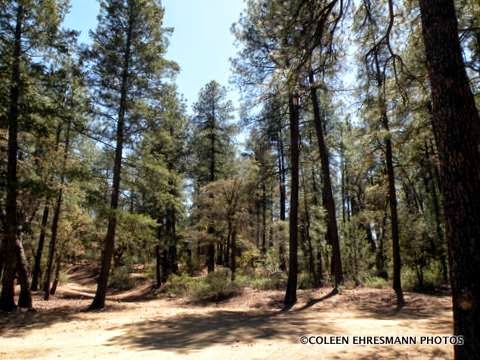
On April 20, 1914 nineteen innocent men, women and children were killed in the Ludlow Massacre. Coal miners in Colorado and other western states had been trying to join the UMWA, for many years, but were bitterly opposed by the coal operators, led by the Colorado Fuel and iron Company, owned by John D. Rockefeller, Jr.

"Upon striking, the miners and their families had been evicted from their company-owned houses and had set up a tent colony on public property. The massacre occurred in a carefully planned attack on the tent city by Colorado militiamen, coal company guards, and thugs hired as private detectives and strike breakers.

"They shot and burned to death 18 striking miners and their families and one company man. Four women and 11 small children died holding each other under burning tents. Later investigations revealed that kerosine had intentionally been poured on the tents to set them ablaze. The miners had dug foxholes so the some and children could avoid the bullets that randomly were shot through the tent colony by company thugs. the women and children were found huddled together at the bottoms of their tents."

The Ludlow Massacre was the 'beginning' of the conflict called "The Colorado Coalfield War" which ended on December 10, 1914 when the UMWA finally ran out of money and called off the strike. The Colorado Coalfield War had a death toll of about 75 people before president Woodrow Wilson sent Federal troops to disarm both sides.

The Ludlow strike and the Colorado Coalfield War had a lasting impact on conditions at Colorado mines and on labor relations nationally. John D Rockefeller, Jr. worked with the Canadian Prime Minister to develop reforms for the mines and the towns, which included paved roads and recreational facilities, as well as worker representation on committees dealing with working conditions, safety, health, and recreation. - Wikipedia

"A monument erected by the UMWA stands today in Ludlow, Colorado in remembrance of the brave and innocent souls who died for freedom and human dignity." -from United Mine Workers of America (all quoted sections are from this web site)
*Ludlow is now a ghost town, but the Ludlow Tent Colony Site was declared a U.S. National Historic Landmark.
*George S. McGovern, Senator from South Dakota, wrote his doctorate dissertation and eventually a
book The Great Coalfield War about the Colorado Coalfield conflict and war.
We spent the night in Pueblo completing a few more caches, and then headed to Colorado Springs on Saturday morning so we could attend a Breakfast Meet & Greet geocaching event; our first CO event.
(I wasn't going to miss a second one!)

snow covered mountains and cloudy skies
greeted us in Colorado Springs

this front met us as we came back into town after caching
northeast of Colorado Springs
some sleet, some rain, some snow throughout the day
no measurable amounts

a virtual cache at the old train depot

Hubby ate at a restaurant in the depot when he was activated
for Desert Storm and awaited deployment at Fort Carson
he said they served excellent spaghetti
the restaurant closed a year ago

and a virtual at a log house
in downtown Colorado Springs
I was surprised at the number of homeless people in the areas of the last two cache sites. They were hanging out in the parks. It was an alarming number, mostly men.
Not only does geocaching take us to places we might not visit if it wasn't for caching, but we often learn things we never knew, like the Ludlow Massacre. Reading the signs at the Historic site made an impact, but doing the research for this post made even more of an impact.
Our cache collection after Colorado Springs was rather boring. We found several more Welcome to... caches in Nebraska and South Dakota. We were on a time frame so there wasn't time for any earth caches or virtuals. It was time to take the shortest route possible and get home.




















































